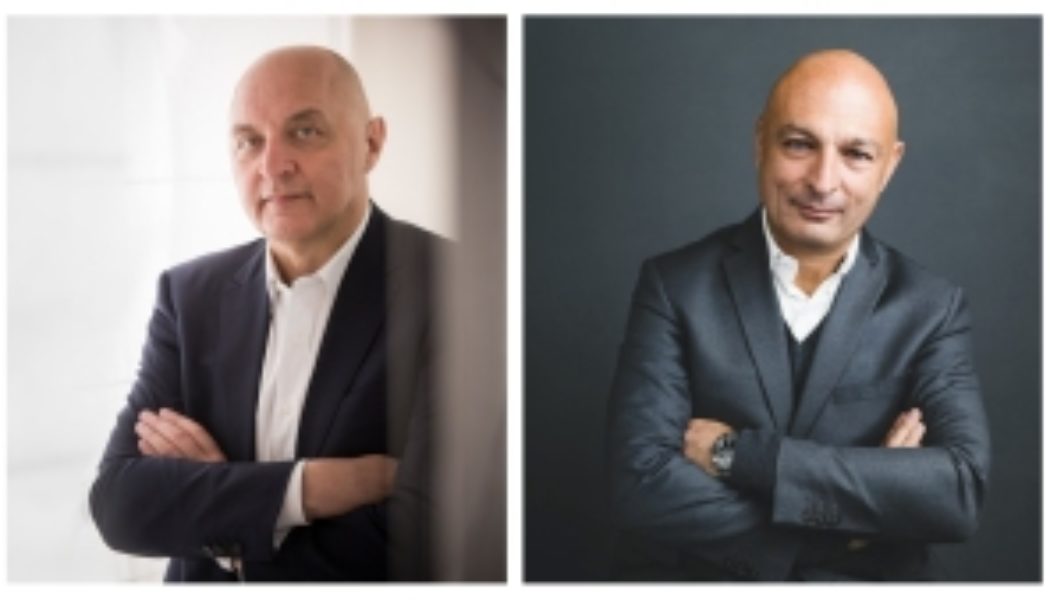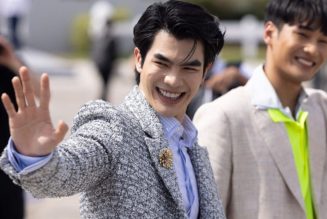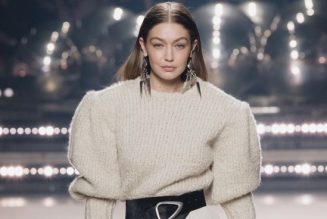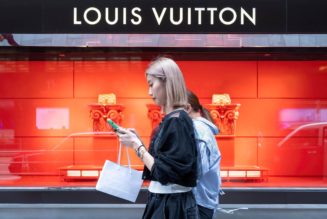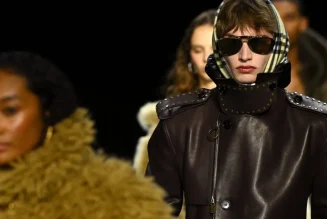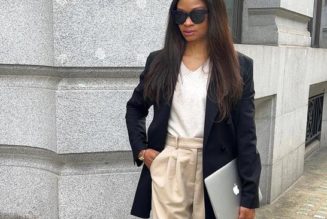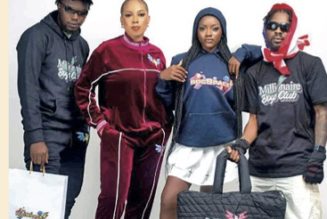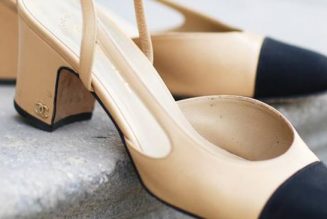PARIS — Call it the Pharrell effect: The growing synergies between fashion and entertainment are driving worldwide interest in the Paris fashion weeks, as brands tap into a globalized cultural conversation with spectacular shows and celebrity-filled front rows.
Pharrell Williams’ bells-and-whistles debut for Louis Vuitton, featuring a gospel choir and a live set by Jay-Z, put the brand in pole position during the most recent round of men’s shows, according to the latest tallies from Launchmetrics.
Meanwhile, Maria Grazia Chiuri’s quiet luxury collection for Dior, which drew guests including Natalie Portman, Elizabeth Debicki and Alexandra Daddario, propelled the brand to the top of the chart for Paris Couture Week, it said.
The data research and insights company’s proprietary media impact value figure calculates the impact of relevant media placements on all channels (online, social and print), inclusive of paid, owned and earned mediums.
In a separate report released concurrently with the rankings, Launchmetrics found that overall, both menswear and haute couture saw an impressive increase in MIV compared to 2022, fueled by celebrities, in particular those from Asia.
In parallel, brands’ own channels are becoming increasingly effective at relaying their runway events, overtaking influencers to become the second most important voice after media.
In a webinar on Friday, Michael Jais, chief executive officer of Launchmetrics, and Pascal Morand, executive president of the Fédération de la Haute Couture et de la Mode, said the figures show that fashion and entertainment are merging, with brands turning into media channels that harness the power of music and film stars to promote their collections.
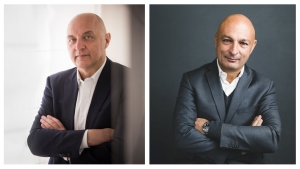
Morand said the Vuitton show, which shut down an entire section of central Paris, marked a watershed for the industry.
“It was a new paradigm. It doesn’t mean that fashion will be less important, but it witnesses and emphasizes fashion at the heart of the culture industry,” said the executive. “It opens new ways and it enlarges the possibilities.”
Jais concurred. “Marketing is integrating more entertainment into their techniques. I see and I hear more and more brands in fashion, but also in beauty, talking about brand entertainment strategies,” he said.
The challenge for designers is to maintain a high level of creativity at the heart of these increasingly ambitious marketing efforts, Morand said. “The whole story for designers, the artistic directors and brands, is not to be integrated, absorbed by entertainment,” he cautioned.
Indeed, the showbiz-ification of fashion has prompted some designers to opt for the opposite approach by focusing on their craft, an approach that was particularly evident during the couture shows, which extolled quiet luxury – even as Cardi B did the rounds, helping to drive engagement around shows by the likes of Schiaparelli, Thom Browne, Fendi and Gaurav Gupta.
“It’s beyond her talent. It shows that – and it will be more and more like that – couture is very attractive because there is this kind of purity of truth,” commented Morand.
“At this moment of the digital society, what matters is the hand, the sensory perception, the uniqueness, the know-how, and this is something very absolute, whatever the price is, just in the way it’s done, so it makes it very attractive,” he added, noting this human touch was a draw both in terms of social influence and celebrities.
The haute couture week in July generated $187.2 million in MIV, up 58 percent year-on-year. Owned media accounted for 13.8 percent of the total, versus 13.3 percent for influencers and 9.2 percent for celebrities. By comparison last year, owned media represented 16 percent, below influencers at 16.4 percent, while celebrities had a share of just 4.5 percent.
“While all voices have demonstrated considerable growth since last year, the celebrity voice grew the most – tripling its results since 2022,” the report found.
Reflecting that power, luxury brands are increasing their presence in the cultural sphere, said Jais, citing the example of Saint Laurent launching a film production arm at this year’s Cannes Film Festival.
“This interconnection between brand and cultural events is something that is also a topic that has to be taken into account into the future,” he said. “The investment in all media channels is growing and I think it will be a critical part of the strategies of the brands.”
Launchmetrics noted that less than half of the couturiers presenting in Paris were French, reflected by a stark rise in global coverage of the event.
Haute couture is resonating especially across Asia, with social media channel Weibo generating 2.5 times more MIV than it did in 2022, contributing to a 58 percent increase in MIV generated by China. India reported a 320 percent jump in MIV versus last year, while Thailand’s MIV was multiplied by eight, Launchmetrics said.
Among the celebrities from the Asia-Pacific region, the top placement went to Filipino actress, singer and businesswoman Heart Evangelista, who generated $1.27 million in MIV with 11 placements. A close second was Indian actress and model Urvashi Rautela, who scored $1.24 million in MIV through just five placements.
The MIV for men’s fashion week in June totaled $163.5 million, up 97 percent versus the prior year. “Tellingly, the brand lineup remained the same, proving that brand performance is what’s driving MIV,” Launchmetrics said. “Brands are working even harder to overcome the competition by increasing impact across all channels.”
Here too, Asia was a driving force with Thailand leading the way with $11.7 million, an eightfold increase versus 2022, followed by South Korea at $10 million, representing an annual increase of 297 percent.
This reflected star sightings including Thai actors Nattawin Wattanagitiphat, better known as Apo, and Phakphum Romsaithong, nicknamed Mile, alongside K-pop star Cha Eun-woo, a member of boy band Astro, at Dior; and Taeyong, a member and leader of South Korean boy band NCT, at Loewe.
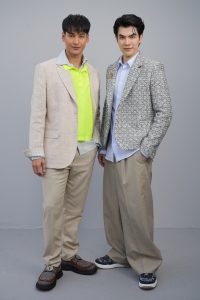
Celebrities accounted for an 18.5 percent share of voice, topping owned media at 17.8 percent and influencers at 8.1 percent. This represented a 397 percent jump versus 2022.
Morand noted that after the disruption of the coronavirus pandemic, which forced brands to pivot to digital formats, the return of physical shows is attracting crowds comparable to those at the Cannes Film Festival or concerts.
“It’s not new that fashion is linked to the pop culture, in particular, but it’s like this global cultural event,” he said. “That is something very strong, which raises some problems of security, I must say, and so we will give more and more guidelines.”
Jay-Z’s performance at Vuitton achieved $8.7 million in MIV, while Beyoncé’s attendance at the same show generated $9.2 million, and Rihanna accounted for $9.4 million, even though she arrived midway during the event. Overall, Vuitton generated $42.6 million in MIV, leading the men’s top five ranking ahead of Dior, Loewe, Ami and Givenchy.
During Paris Couture Week, Dior totaled $27.3 million in MIV, followed by Chanel, Valentino, Schiaparelli and Fendi.
Another key trend is the growing influence of TikTok, the report found. The app is now the second highest earning platform in terms of MIV, generating $16.5 million and overtaking YouTube as the main video content channel for Men’s Paris Fashion Week.
“Each video has 40 percent more impact than on Instagram,” said Jais.
“When you talk with TikTok executives, they tell you that their competitors are not fashion media platforms but entertainment platforms such as Netflix and others. So again, it’s probably also another connection between fashion and entertainment,” he concluded.
